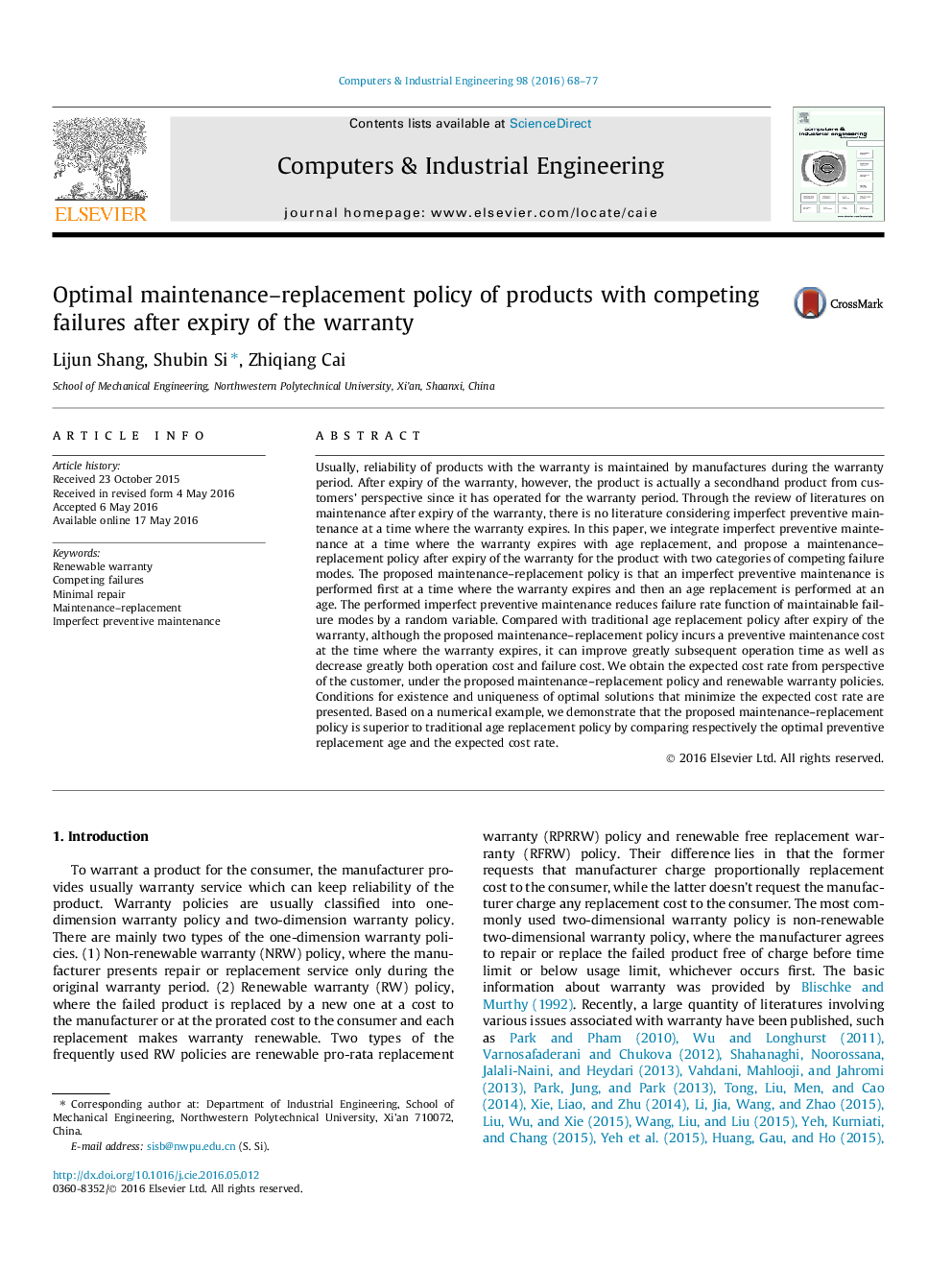| Article ID | Journal | Published Year | Pages | File Type |
|---|---|---|---|---|
| 1133312 | Computers & Industrial Engineering | 2016 | 10 Pages |
•We propose a maintenance–replacement policy after expiry of the warranty.•Imperfect PM is performed first and then age replacement is implemented.•The imperfect PM reduces maintainable failure rate function by a random variable.•We optimize PR period and reduction in the maintainable failure rate function.•Performance of the proposed policy outperforms that of the age replacement policy.
Usually, reliability of products with the warranty is maintained by manufactures during the warranty period. After expiry of the warranty, however, the product is actually a secondhand product from customers’ perspective since it has operated for the warranty period. Through the review of literatures on maintenance after expiry of the warranty, there is no literature considering imperfect preventive maintenance at a time where the warranty expires. In this paper, we integrate imperfect preventive maintenance at a time where the warranty expires with age replacement, and propose a maintenance–replacement policy after expiry of the warranty for the product with two categories of competing failure modes. The proposed maintenance–replacement policy is that an imperfect preventive maintenance is performed first at a time where the warranty expires and then an age replacement is performed at an age. The performed imperfect preventive maintenance reduces failure rate function of maintainable failure modes by a random variable. Compared with traditional age replacement policy after expiry of the warranty, although the proposed maintenance–replacement policy incurs a preventive maintenance cost at the time where the warranty expires, it can improve greatly subsequent operation time as well as decrease greatly both operation cost and failure cost. We obtain the expected cost rate from perspective of the customer, under the proposed maintenance–replacement policy and renewable warranty policies. Conditions for existence and uniqueness of optimal solutions that minimize the expected cost rate are presented. Based on a numerical example, we demonstrate that the proposed maintenance–replacement policy is superior to traditional age replacement policy by comparing respectively the optimal preventive replacement age and the expected cost rate.
